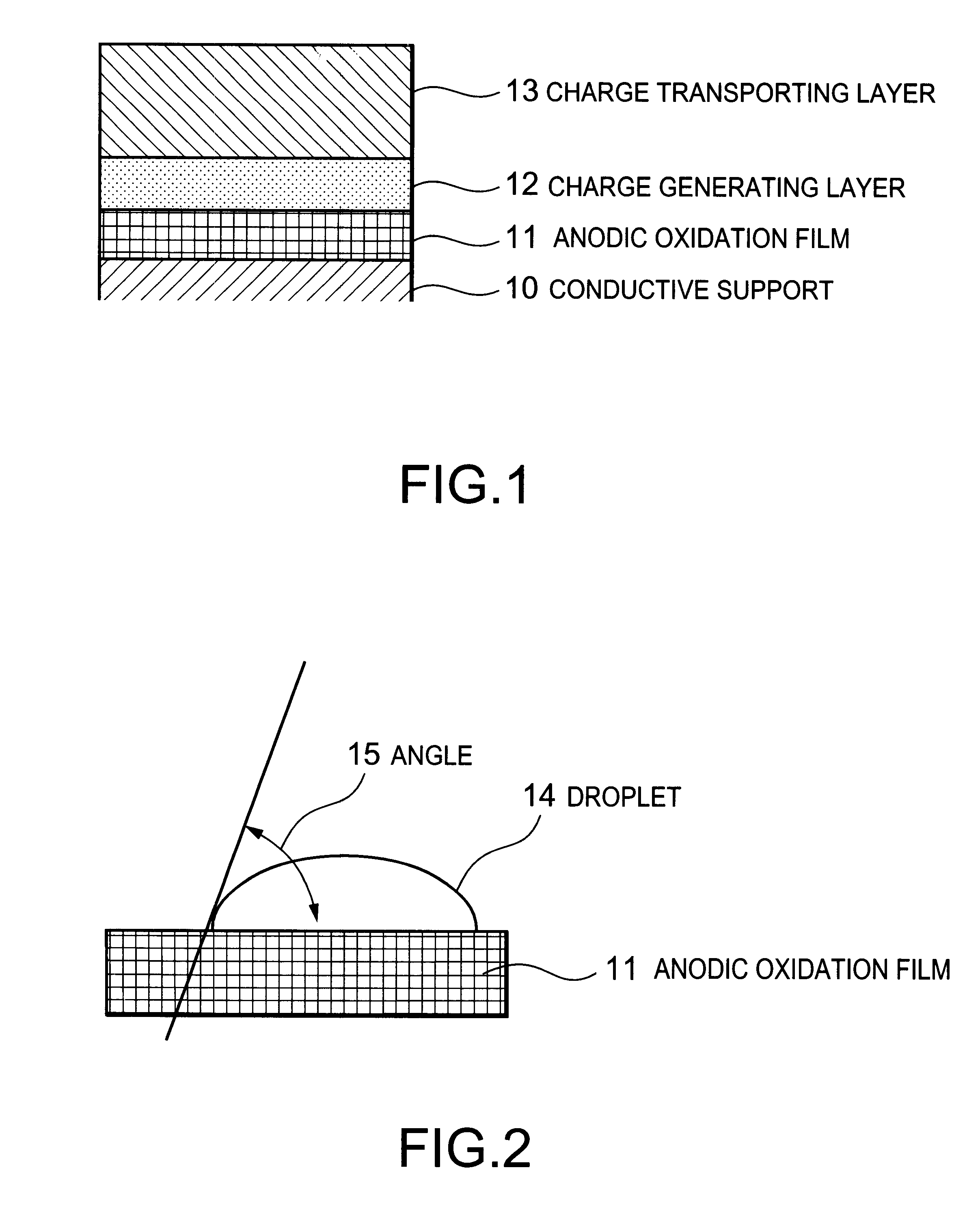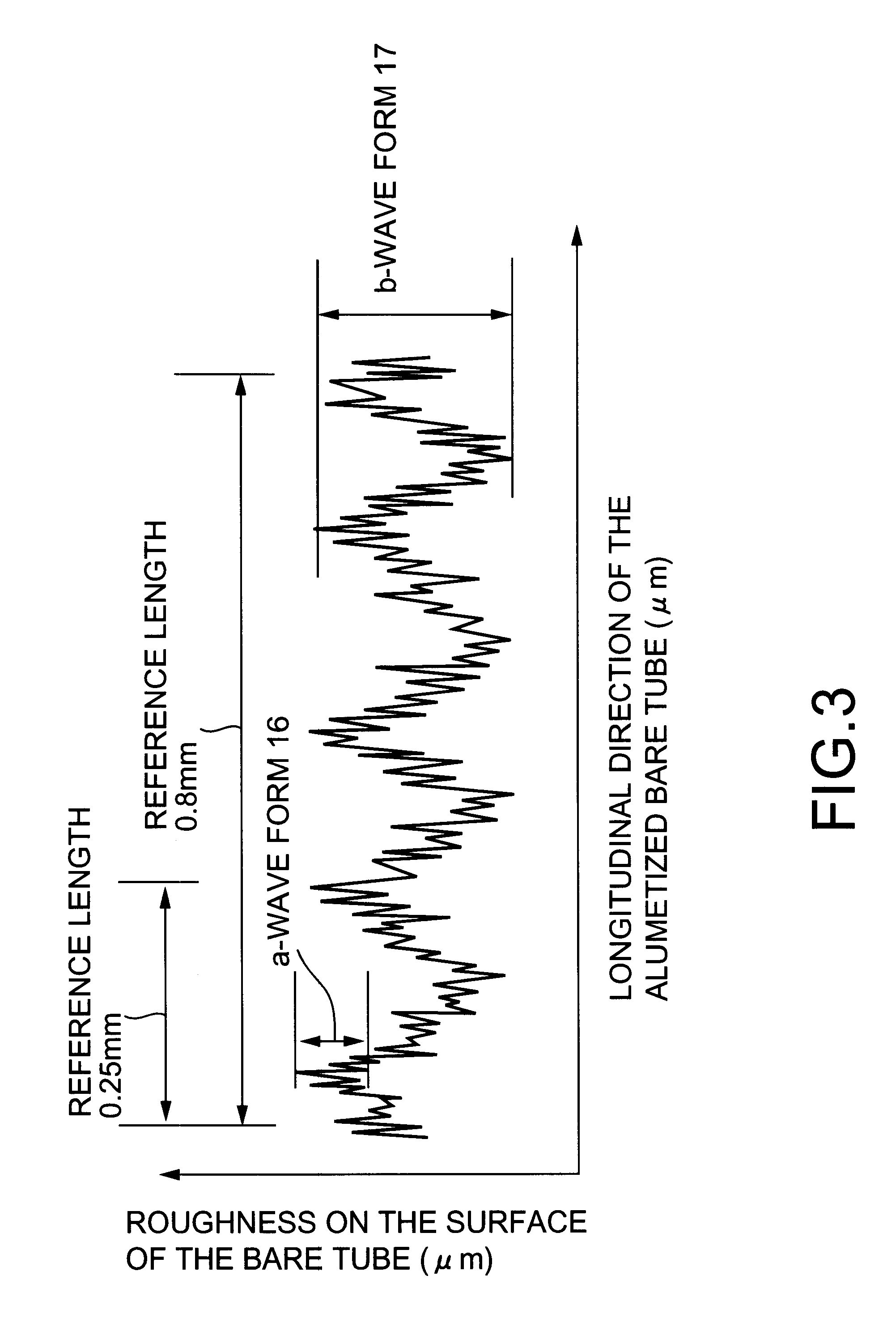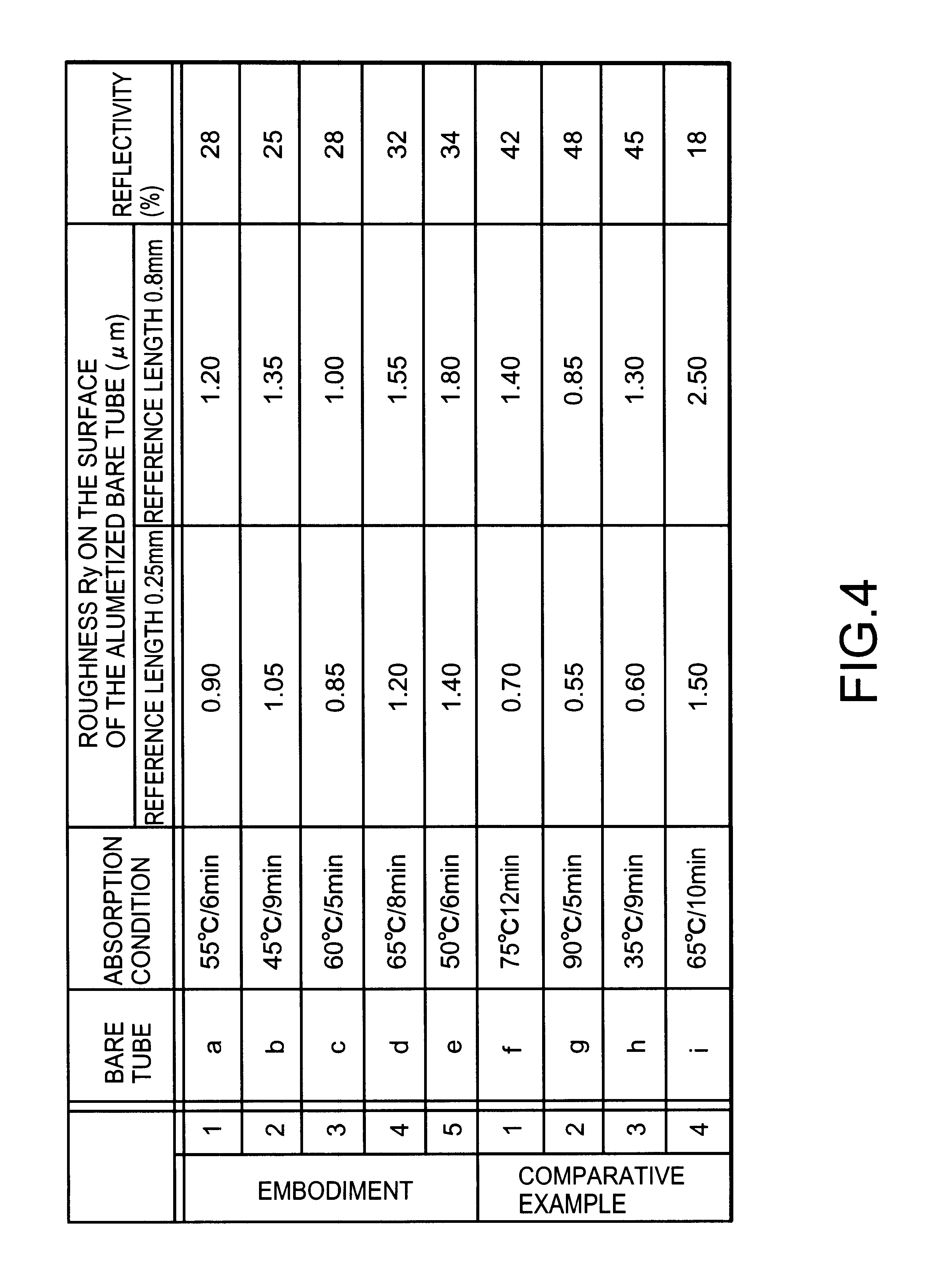Electrophotographic photoreceptor and its manufacturing method
a photoreceptor and photoreceptor technology, applied in the field of electrostatic photoreceptors, can solve the problems of defect in electrostatic latent image, non-uniform contrast with interference fringe pattern, and interference between incident lights
- Summary
- Abstract
- Description
- Claims
- Application Information
AI Technical Summary
Benefits of technology
Problems solved by technology
Method used
Image
Examples
example
Next, the present invention will be explained in the concrete with reference to embodiments, but is not limited to the following embodiments so long as its spirits are not exceeded.
As a material of the conductive support 10, an aluminum alloy of 6000 series in JIS Standard was used, which aluminum alloy was subjected to a hot extrusion process to obtain a cylindrical aluminum bare tube with an external diameter of approximately 30 mm and a length of approximately 350 mm. Using a tool with a blade edge in which sintered diamond chips of a moderate density are adjusted, precise cutting processing for the surface of the bare tube was performed. After the surface cutting has been completed, the bare tube was subjected to degrease and washing process with an organic solvent and followed by etching process, and subsequently, after washed with water, it was subjected to an anode oxidation treatment for 15 minutes using sulfuric acid with a concentration of 150 g / l as an electrolyte solutio...
embodiments 1 to 3
The charge generating layer having a thickness of approximately 0.2 .mu.m was formed by applying a paint to alumetized bare tubes obtained a to c and drying by heating them, which paint was produced by adding 2.5 parts by weight .tau. type metal-free phthalocyanine and 2 parts by weight polyvinyl butyral to 100 parts by weight tetrahydrofuran solution and by dispersing the solution for 24 hours in a ball mill.
Next, after 14 parts by weight 2-methyl-4-dibenzyl amino-benzaldehyde-N,N-diphenyl hydrazone, 6 parts by weight 1,1-bis(palladiethyl aminophenyl)-4,4-diphenyl-1,3-butadiene, and 20 parts by weight polycarbonate (Z-400, which is a product put on the market from Mitsubishi Gas Chemical) were dissolved in 100 parts by weight methylene chloride to immerse and apply on the charge generating layer, the layer was dried by heating to form a charge transporting layer having a thickness of approximately 20 .mu.m, thereby producing the electrophotographic photoreceptors.
embodiments 4 to 5
The charge generating layer having a thickness of approximately 0.15 .mu.m was formed by applying a paint to alumetized bare tubes obtained d to e and drying by heating them, which paint was produced by adding 2 parts by weight titanyl phthalocyanine and 2 parts by weight polyvinyl butyral to 100 parts by weight tetrahydrofuran solution and by dispersing the solution for 24 hours in a ball mill.
Next, after 18 parts by weight .alpha.-phenyl-4-N,N-bis(4-methylphenyl)aminostilbene and 20 parts by weight polycarbonate (Z-400, Mitsubishigasukagaku) were dissolved in 95 parts by weight tetrahydrofuran to immerse and apply on the charge generating layer, the layer was dried by heating to form a charge transporting layer having a thickness of approximately 20 .mu.m, thereby producing the electrophotographic photoreceptors.
The electrophotographic photoreceptors obtained in this way are referred to as drums A to E.
PUM
 Login to View More
Login to View More Abstract
Description
Claims
Application Information
 Login to View More
Login to View More - R&D
- Intellectual Property
- Life Sciences
- Materials
- Tech Scout
- Unparalleled Data Quality
- Higher Quality Content
- 60% Fewer Hallucinations
Browse by: Latest US Patents, China's latest patents, Technical Efficacy Thesaurus, Application Domain, Technology Topic, Popular Technical Reports.
© 2025 PatSnap. All rights reserved.Legal|Privacy policy|Modern Slavery Act Transparency Statement|Sitemap|About US| Contact US: help@patsnap.com



